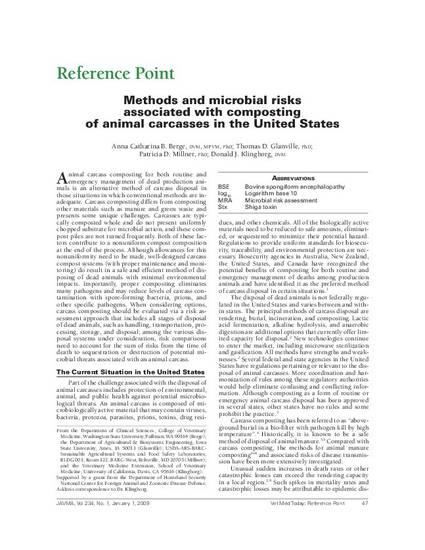
Article
Methods and microbial risks associated with composting of animal carcasses in the United States
Journal of the American Veterinary Medical Association
Document Type
Article
Disciplines
Publication Date
1-1-2009
DOI
10.2460/javma.234.1.47
Abstract
Composting is an alternative method of carcass disposal in those situations when conventional methods are inadequate. With proper maintenance and monitoring, carcass composting systems can be safe and efficient with minimal environmental impacts. Importantly, proper composting eliminates many pathogens and may reduce levels of carcass contamination with spore-forming bacteria, prions, and other pathogens.
Access
Open
Rights
Works produced by employees of the U.S. Government as part of their official duties are not copyrighted within the U.S. The content of this document is not copyrighted.
Language
en
File Format
application/pdf
Citation Information
Anna Catharina B. Berge, Thomas D. Glanville, Patricia D, Millner and Donald J. Klingborg. "Methods and microbial risks associated with composting of animal carcasses in the United States" Journal of the American Veterinary Medical Association Vol. 234 Iss. 1 (2009) p. 47 - 56 Available at: http://works.bepress.com/thomas_glanville/11/

This article is from Journal of the American Veterinary Medical Association 234, no. 1 (January 1, 2009): 47–56, doi:10.2460/javma.234.1.47.